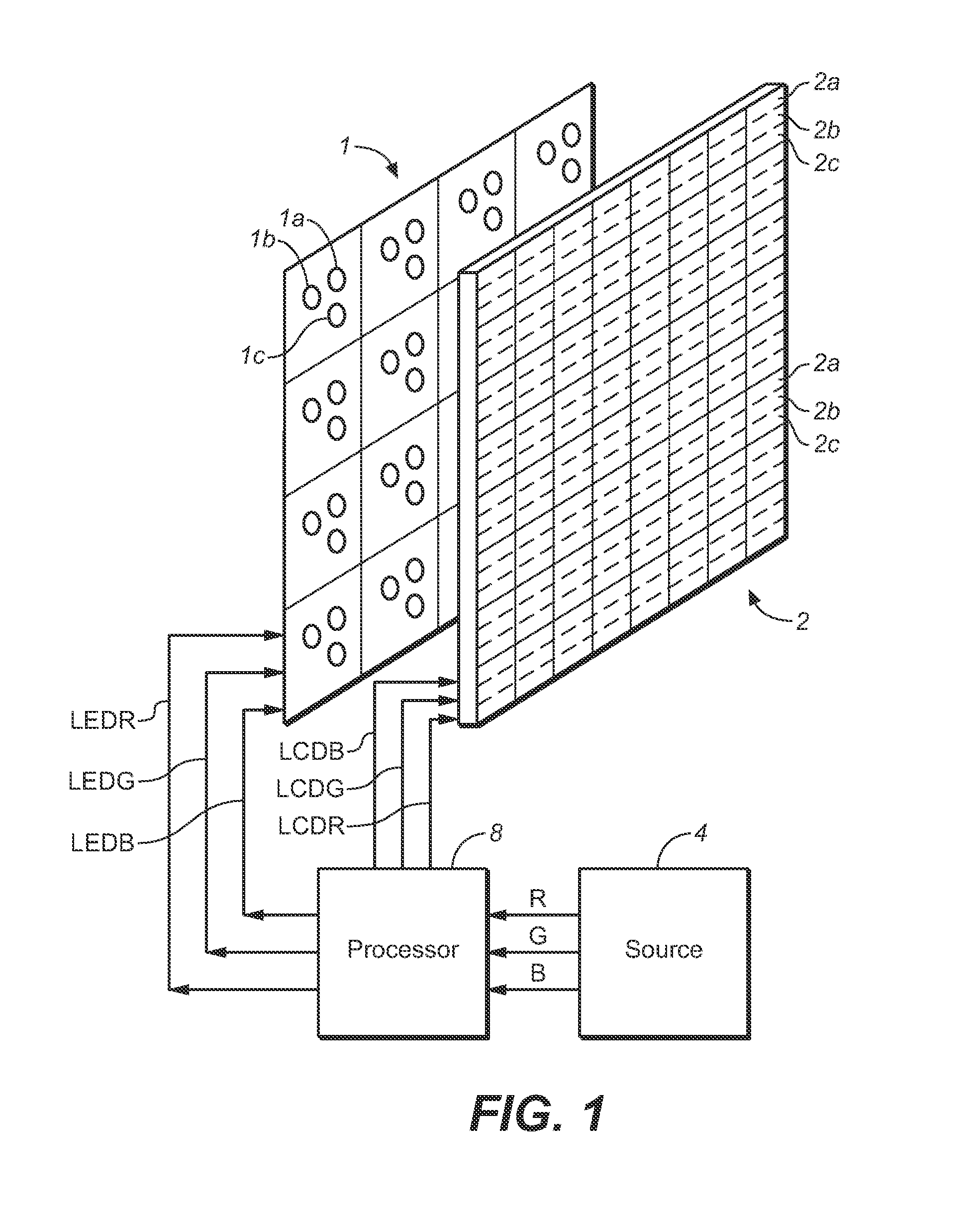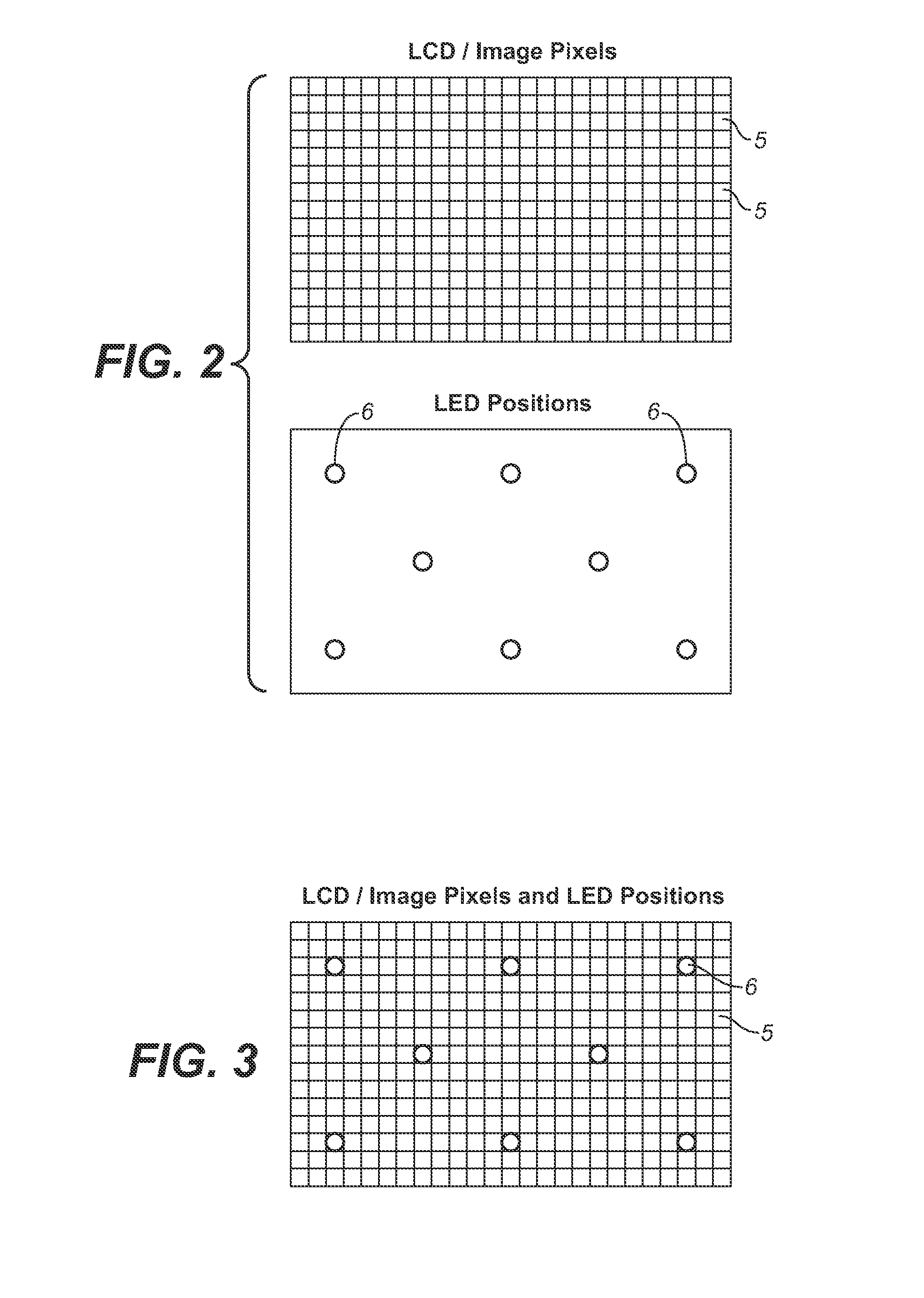Method and System for Backlight Control Using Statistical Attributes of Image Data Blocks
- Summary
- Abstract
- Description
- Claims
- Application Information
AI Technical Summary
Benefits of technology
Problems solved by technology
Method used
Image
Examples
Embodiment Construction
[0065]Many embodiments of the present invention are technologically possible. It will be apparent to those of ordinary skill in the art from the present disclosure how to implement them. Embodiments of the inventive system and method will be described with reference to FIGS. 1 and 9-12.
[0066]FIG. 1 is a block diagram of an embodiment of the inventive system. The system of FIG. 1 includes a dual modulation display for displaying images sequentially in response to a video input signal from source 4. The display comprises front modulating panel 2 and backlight panel 1 positioned (by means not shown) behind panel 2. Optionally, a diffuser panel (not shown) is positioned between panels 1 and 2. The system also includes processor 8, coupled between the dual modulation display and source 4 and configured to generate driving signals for both panels of the display in response to the input signal.
[0067]In FIG. 1, processor 8 has outputs coupled to backlight panel 1 and to panel 2, and inputs ...
PUM
 Login to View More
Login to View More Abstract
Description
Claims
Application Information
 Login to View More
Login to View More - R&D
- Intellectual Property
- Life Sciences
- Materials
- Tech Scout
- Unparalleled Data Quality
- Higher Quality Content
- 60% Fewer Hallucinations
Browse by: Latest US Patents, China's latest patents, Technical Efficacy Thesaurus, Application Domain, Technology Topic, Popular Technical Reports.
© 2025 PatSnap. All rights reserved.Legal|Privacy policy|Modern Slavery Act Transparency Statement|Sitemap|About US| Contact US: help@patsnap.com



